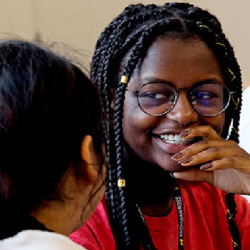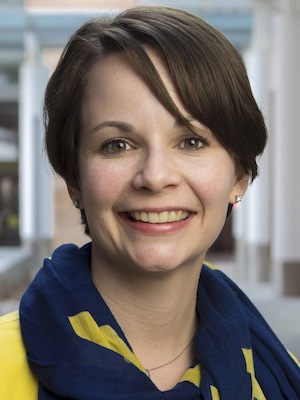Behind the Numbers of Another Strong Admissions Cycle and our Incoming Michigan Ross BBA Class

Each July, when our team has finished the year’s admissions cycle (transfer decisions went out at the end of June!), we can start digging into the application data from the year prior to see the trends and better understand our incoming class.
This year, we had a number of highlights that I wanted to share about the applications we received, our admissions offers and yield rates, and the class profile of our incoming Michigan Ross BBA class. This is the first of two blogs where I will focus on the 2021-2022 application cycle and incoming class profile, as I believe it is important to provide clarity and transparency with our admissions process as well as the students who could one day be your classmates. In this blog, I will talk about the quantitative class profile data, and will follow up later this month with one on our qualitative data.
Application volume
This year, our application volume for the Direct Admission/Preferred Admission process was approximately 8,680 total applications, which is up slightly from 8,328 in 2020-21. It is worth noting that before the University of Michigan went test-flexible in 2020, our application volume was roughly 6,000.
For 2022, we saw increases in applicants from Michigan, along with international students, students with racially diverse and limited income backgrounds, and first-generation college students (those applicants who would be the first in their family to attend a four-year university.) These are very exciting outcomes for our team and they reflect positively on our goal to continue increasing the diversity of our applicant pool.
Admission offers
We admitted approximately 860 applicants this year. This is lower than the 935 applicants we admitted in 2021. We admitted fewer in hopes of not over-enrolling our incoming class due to our high-yield rate. We seek to enroll a class of 500 first-year students, and last year, we enrolled 532. Thus, we decided to give fewer admission offers to get back to our target class of 500. It turns out interest in the Michigan Ross BBA Program is even stronger than we anticipated, and we over-enrolled the class again (we are close to 550), even with fewer admits. So, what does this mean for the future? It could potentially mean we lower the number of admits again next year and utilize a larger waitlist instead.
Yield rates
Admissions yield rates are percentages determined by the admits that matriculate to the institution. At Michigan Ross, we are working with really small numbers compared to the university, which makes yield even harder to predict. Additionally, yield percentages can be drastically different for certain populations. For example, our in-state yield rate can be as high as 92%, whereas our out-of-state yield rate can be as low as 45%. I watch these numbers closely when we are in an active admission cycle. That means from February through April, I am not only releasing admission decisions, but also sweating at my desk each morning opening the matriculation report hoping that we do not over enroll. For this year, the in-state yield rate is currently at 91% and out-of-state yield is 51%, which is considered particularly high in higher education and in business schools.
Enrollment profile
The official class profile data will be certified and released in late August, and you will be able to find it on our website. So far, I am happy to report that we have again seen an increase in the number of women who are applying and enrolling in the Michigan Ross BBA Program. When I became director of admissions at Ross in 2013, our female enrollment was at 32%, and for fall 2022, we anticipate women representing 47% of the incoming class. Michigan Ross continues to be a place where Women at Ross thrive, and I am glad to see more women coming out of high school pursuing business degrees. Additionally, students with racially minoritized identities (Black, Hawaiian, Hispanic, and Native American) now represent 17% of our class compared to 2% in 2013.
We still have a long way to go with parity, but the incoming class of students is moving our community in the right direction with our focus on BBA Student Diversity and creating an inclusive learning environment.
In sum, it was another year of large application volumes, a competitive applicant pool with impressive candidates, and diversity of those applying to the Michigan Ross BBA Program. The incoming class also has outstanding qualitative measures (leadership, ability to work in groups, community engagement). I will provide an overview of those measures in my next blog later this month where I will focus on a few Ross Admission Portfolios that really stood out to us, along with a few admitted student profiles. Stay tuned!





